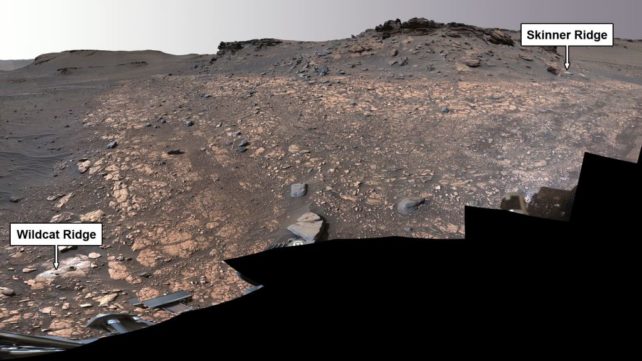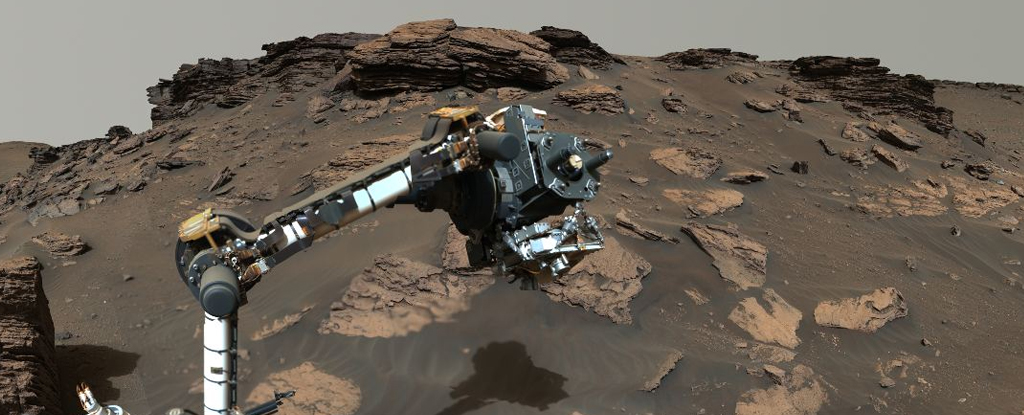Products You May Like
Scientists with NASA’s Perseverance Mars rover said today that the rover has collected several tantalizing organic rock samples from an ancient river delta on the Red Planet.
These samples have now been stowed for a planned future mission that hopes to retrieve the specimens and bring them back to Earth for the first-ever sample return from Mars.
“The rocks that we have been investigating on the delta have the highest concentration of organic matter that we have yet found on the mission,” said Perseverance project scientist Ken Farley, during a press conference on Thursday, September 15.
“And of course, organic molecules are the building blocks of life, so this is all very interesting that we have rocks that were deposited in a habitable environment in a lake which carry organic matter.”
With the four samples collected at the delta, which scientists believe is a former lakebed, the rover has now collected a total of 12 samples. You can see more details about each sample at this NASA website.
The rover’s landing site, Jezero Crater is home to this fan-shaped delta that formed about 3.5 billion years ago, at what appears to be the convergence of a Martian River and a lake.
Perseverance is currently investigating the delta’s sedimentary rocks, formed when particles of various sizes settled in the once-watery environment. During its first science campaign, the rover explored the crater’s floor, finding igneous rock, which forms deep underground from magma or during volcanic activity at the surface.
Now in its second science campaign, the rover is studying the delta, where it has found organic materials. While organics have been found on Mars before by both Perseverance and the Curiosity rover, this latest detection was made in an area where, in the distant past, sediment and salts were deposited into a lake under conditions in which life could potentially have existed.
Farley said that for example, they found a sandstone that carries grains and rock fragments created far from Jezero Crater – and a mudstone that includes intriguing organic compounds.

“Wildcat Ridge” is the name given to a rock about 3 feet (1 meter) wide that likely formed billions of years ago as mud and fine sand settled in an evaporating saltwater lake.
On July 20, the rover abraded some of the surface of Wildcat Ridge so it could analyze the area with the instrument called Scanning Habitable Environments with Raman & Luminescence for Organics & Chemicals, or SHERLOC.
What SHERLOC’s analysis found is that the samples contain a class of organic molecules that are correlated with those of sulfate minerals. Sulfate minerals found in layers of sedimentary rock can yield significant information about the watery environments in which they formed.
“This correlation suggests that, when the lake was evaporating, both sulfates and organics were deposited, preserved and concentrated in this area,” said SHERLOC scientist Sunanda Sharma, during the press briefing. “I personally find these results so moving because it feels like we’re in the right place with the right tools at a very pivotal moment.”
NASA said that organic molecules consist of a wide variety of compounds made primarily of carbon and usually include hydrogen and oxygen atoms. They can also contain other elements, such as nitrogen, phosphorus, and sulfur.
While there are chemical processes that produce these molecules that don’t require life, some of these compounds are the chemical building blocks of life. The presence of these specific molecules is considered to be a potential biosignature – a substance or structure that could be evidence of past life but may also have been produced without the presence of life.
“We picked the Jezero Crater for Perseverance to explore because we thought it had the best chance of providing scientifically excellent samples – and now we know we sent the rover to the right location,” said Thomas Zurbuchen, NASA’s associate administrator for science in Washington, in a press release.
“These first two science campaigns have yielded an amazing diversity of samples to bring back to Earth by the Mars Sample Return campaign.”
NASA and the European Space Agency (ESA) are cooperating in planning ways to bring the first samples of Mars material back to Earth for detailed study. As of now, the plan is for a Sample Return Lander to land near or in Jezero Crater, bringing a small rocket on which the samples collected by Perseverance would be loaded.
Two Ingenuity-like helicopters would provide a secondary capability to retrieve samples on the surface of Mars. Once the sample cache is launched off the Red Planet, another spacecraft would capture it in Mars orbit, and then bring it back to Earth, perhaps by the early to mid 2030s.
These first collected and returned samples could answer a key question: did life ever exist on Mars?
This article was originally published by Universe Today. Read the original article.
